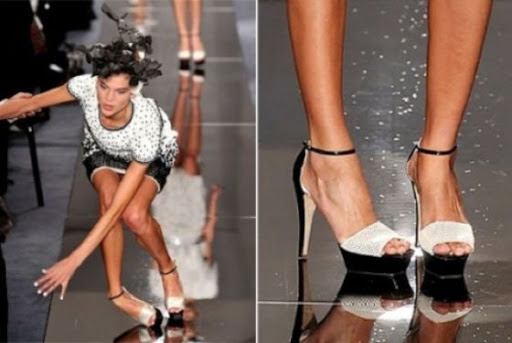High heels, the not-so-ultimate fashion accessory! While some believe “beauty is pain,” how much pain and long term damage are you willing to endure?
Slide into a pair of high heels and postural changes occur instantaneously. The low back becomes more arched, the upper body leans forward, the buttocks stick backwards, knees are slightly flexed, weight shifts to the front of the feet and the calf muscles are shortened.
It is all downhill from here as our muscles adapt to these changes in posture. This will include weakened and elongated gluteal muscles, abdominal core muscles and upper back erector spinae muscles. While lower back muscles and hip flexors become shortened and strong.
Spending prolonged periods in your “killer heels” and you may develop “sway back posture,” where the curve in your lower back (called lordosis) is significantly increased. An increased lordosis can change weight bearing patterns through the lumbar vertebrae, discs and facet joints (2 small joints connecting one vertebrae to the next). These changes to your joints and muscles may be enough to offset low back pain. Alternatively, pain can stem from lower in the biomechanical chain.
The hip flexor muscles play an important role in walking, each time you take a step forward they generate the force to swing your leg through. Adding high heels to the equation means less contact between the foot and ground causing reduced propulsion which then leads to the hip flexors having to work harder to swing the entire leg forward. The result – a shortened and contracted hip flexor muscle!
Wearing heels for a short period is enough to cause damage. You don’t have to be a biomechanical expert to question the stability and support that the “stiletto heel” provides. Heel striking on a mere 2mm surface can create enough unsteadiness to cause a ghastly ankle sprain (of which I have fallen victim to!).
High heels also cause the foot to point in a downward position (plantarflexed). This creates shortening of the calf muscles (gastrocnemius and soleus) as well as the Achilles tendon, a position that also makes these muscles less efficient when propelling the foot off the ground during walking. This shortening can be associated with an Achilles tendinopathy.
As an Osteopath who treats women that are high heel wearers by day and long distance runners by night, it is not uncommon to find high heel related plantar fasciitis or Achilles tendinopathy. Why? Because these tissues are being shortened for prolonged periods in high heels throughout the day, and then stretched for 20kms in flat runners (the tissues cannot adapt back to flat shoes quickly enough).
High heels create a 76% increase in weight bearing at the front of the foot and this can result in unsightly bunions and also hammer toes.
Lastly, when it comes to gait, there is nothing more unsightly than a woman stumbling around like an uncoordinated baby elephant!
If you are concerned about your posture and would like a postural assessment, contact the team at Melbourne Osteopathy and Sports Injury Centre today.




